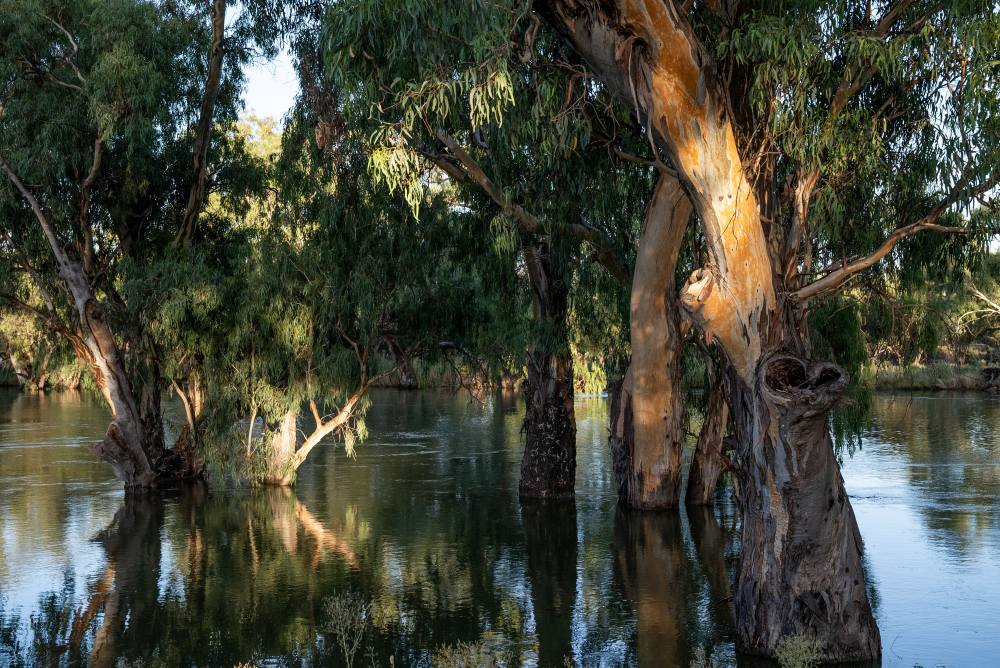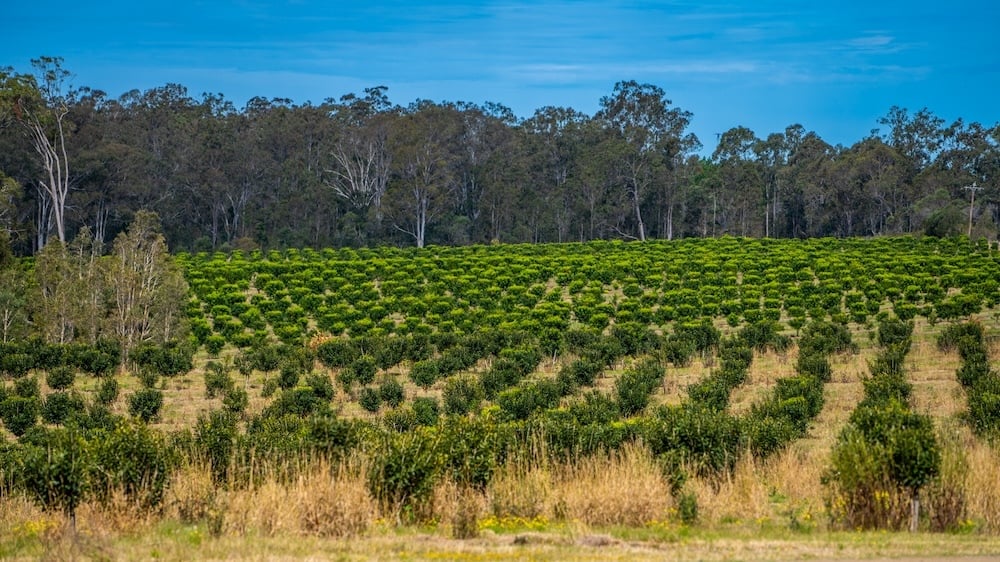$200m deal caps big week in Australian farm sales
Each week, we take the pulse of rural property - from sales data to who’s making headlines. Check out this week's report from Kylie Dulhunty.
4 min read
 Kylie Dulhunty
:
Apr 7, 2025
Kylie Dulhunty
:
Apr 7, 2025

Australia’s rural property market is entering a new phase of cautious confidence, as early signs of price stability, stronger seasonal conditions and evolving buyer appetite give the sector fresh momentum.
Industry leaders noted that while the market has cooled from the highs of recent years, well-located and income-generating assets remain in hot demand, particularly in regions enjoying favourable rainfall.
Colliers National Director of Transaction Services and Agribusiness Jesse Manuel said the market was entering a period of consolidation.
“After a market peak there is generally a short 'correction' period and we saw that play out from mid-2023 to mid-2024,” Mr Manuel said.

Jesse Manuel, Colliers. Pic: Supplied
“These periods are always followed by a plateau, which we're at the beginning of now, with some isolated cases of modest increases in very tightly held and reliable areas.”
Mr Manuel pointed to strong demand in Central Queensland, where quality grazing properties are attracting serious attention, and a healthy appetite from institutional investors for large-scale dryland cropping assets.
“There’s a healthy appetite from multiple institutional investors in this sector currently,” he said.
“And in the livestock side of things, we continue to see very good demand in Queensland right across the board.”
His comments reflect a broader trend of sector-specific performance, with well-diversified assets drawing buyers despite tighter market conditions.
“Assets with regular income streams showing strong profitability such as egg farms, broiler chicken farms, certain horticultural enterprises and piggeries are attracting solid interest,” Mr Manuel explained.
“Existing industry participants are looking to expand in these areas, but also agricultural investors are looking to incorporate some higher cashflow assets into their portfolios.”
Elders General Manager of Farmland Agency and Water Mark Barber said that while total listings remain low, there has been an encouraging lift in activity, particularly in Victoria.
.png?width=343&height=274&name=ELDERS%20Mark%20Barber%20(1).png)
Mark Barber, Elders. Pic: Supplied
“I think we're starting to see a bit of an uptick in volume of sales in some of the southern states where the dry conditions have really impacted on properties coming onto the market,” Mr Barber said.
“But overall, we're still seeing pretty low volumes of property on the market.”
Properties that present well are still commanding strong buyer interest, with Mr Barber reinforcing the importance of professional marketing and presentation to maximise buyer engagement.
“There's still strong demand for good quality properties and properties that are well presented in good areas that have a couple of neighbours that want to go hard on them,” he said.
“We're still seeing plenty of demand for that.”
In the north, properties such as sandalwood plantations have drawn a range of buyers, as confidence improves with recent rainfall.
“We're getting some really good interest in some of the Quintis properties in the north,” Mr Barber said.
“These are sandalwood plantations that have got very good soil, very good water security, and they're attracting a lot of interest.
“It's really interesting to see how the north is attracting more interest from a range of different potential commodities and buyers because of its water security.”
Mr Barber said Kingston Rest, in WA, and Taylors Park, in NT, were both nearing the completion of their campaigns, with a wide range of buyers interested.
“The cattle industry is looking for opportunities to utilise the properties for fodder production, and we've got cotton growers and horticulturalists — so we're seeing a really interesting mix of buyers there,” he said.
Positive seasonal conditions are playing a major role in boosting buyer sentiment, particularly in the north.
“There's some terrific falls in Western Queensland,” Mr Barber said.
“Some of the channels are getting some good falls. We're seeing some good late rain in the north.”
“I think that'll really make a lot of those properties really look really good over the dry season and give them a good solid body of feed and increased confidence.”
-jpg.jpeg?width=389&height=219&name=Col%20Medway%20(1)-jpg.jpeg)
Col Medway, LAWD. Pic: Supplied
Col Medway, LAWD Senior Director, also sees the benefits of recent rainfall in northern Australia, which is supporting cattle markets and maintaining livestock values.
“There's been some historically high falls there that's going to see the channels fill and I think that's going to be very positive in regard to the cattle market and subsequent confidence in those areas,” Mr Medway said.
“It probably also doesn't hurt the southern cattle markets — as long as it's raining somewhere, it underpins livestock values.”
Mr Manuel said while the floods in Queensland had had a devastating impact on livestock and property in some areas, there was an upside.
“On a positive note, those rains that have caused great devastation are now going to have a significant positive impact on setting up feedstocks and subsoil moisture across many regions for many months and probably years to come, which will certainly be a great thing for land values and also buyer sentiment as well,” he said.
However, Mr Medway said some southern regions continued to wait for critical rainfall to trigger a resurgence in activity.
“Basically from Southern NSW down to South Australia, everyone there is sweating on an autumn break,” Mr Medway said.
“People don't wake up just because they get rain and think they're going to buy a property — it's all to do with the underlying impact it has on cash flows and confidence.”
On the global front, trade tensions and the introduction of US tariffs loom large, but experts suggest the impact on land values may be limited.
Mr Manuel was pragmatic about the US tariffs on Australian beef, pointing to the enduring global demand for quality protein.
“Whilst a 10% tariff on our largest US export product beef is not ideal, the demand for Australian beef, coupled with US herd numbers being at a 70-year low, not to mention the tariffs imposed on other countries we compete with, I don't think anyone is expecting a dramatic decline in beef prices,” he said.
“Nor do we envisage any impact on land values.”
Mr Medway echoed this.
“The wonderful thing about world trade is that when one door closes, another one opens,” he said.
While all three experts agreed the market was unlikely to return to the soaring heights of 2022, they see resilience in its foundations.
Mr Medway said commodity prices and seasonal conditions carry more weight than interest rates.
“I actually think commodity prices and seasonal conditions have more of an impact than interest rates,” he said.
“The cost of capital is higher than it was, but it's not high.”
Mr Barber, too, remains optimistic.
“We've seen capital growth rates in Australia of eight, 9% over the last 10 years,” he said.
“Are we going to keep at that level? Maybe not, but it'll certainly perform better than other asset classes through this volatility.”
For Mr Manuel, the blend of local, institutional and foreign capital remains a powerful force.
“There is an even cross-section of buyers across the board, and I know we talk about it a lot, but the weight of institutional and foreign capital looking to be deployed in Australian agriculture is significant,” he said.
“Equally, the Australian banks are very keen to continue helping their clients grow, and with the strong equity positions of a lot of family farming businesses, the capacity of these operations is very strong, and we're seeing some exciting business expansion occurring right across the board.”
Kylie Dulhunty is a journalist with more than 20 years experience covering everything from court to health. Today, Kylie loves nothing more than turning market trends, industry insights and epic property sales - residential, rural and commercial into captivating stories.
Posts By Tag

Each week, we take the pulse of rural property - from sales data to who’s making headlines. Check out this week's report from Kylie Dulhunty.

Each week, we take the pulse of rural property - from sales data to who’s making headlines. Check out this week's report from Kylie Dulhunty.
.png)
Each week, we take the pulse of rural property - from sales data to who’s making headlines. Check out this week's report from Kylie Dulhunty.